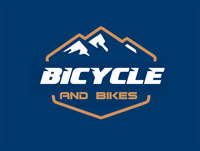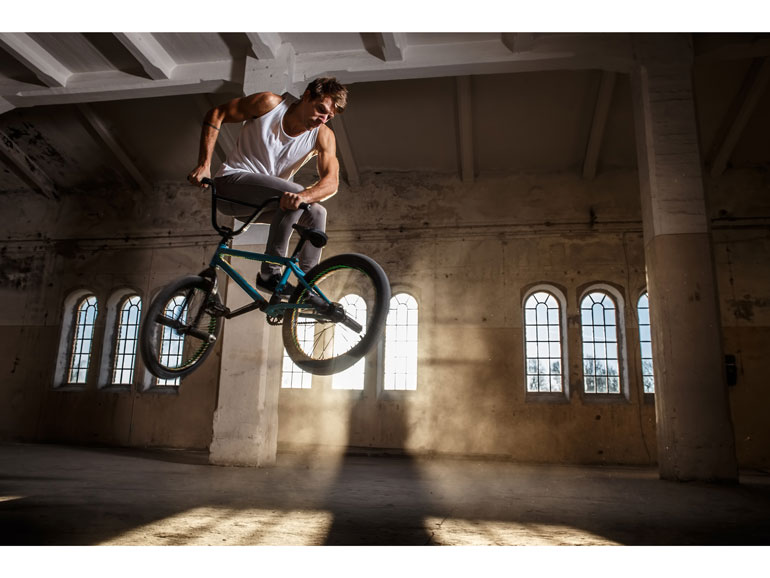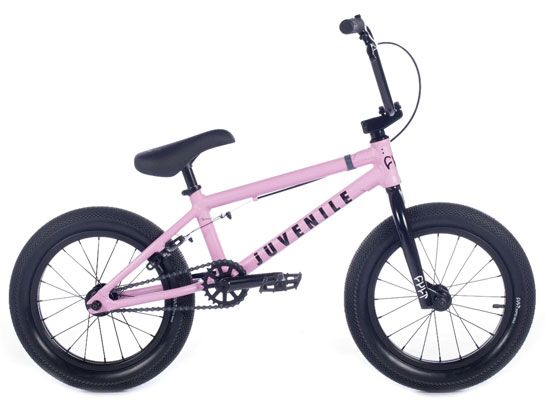Buying a BMX Bike
Features To Look For When Buying a BMX Bike
Embarking on the journey of buying a BMX bike is an exciting adventure, filled with a variety of options to consider.
Whether you’re a novice rider taking the leap into the BMX world or a seasoned pro seeking a new set of wheels, it’s crucial to make an informed choice that best suits your needs, style, and budget.
This page aims to guide you through the fundamental considerations when buying a BMX bike – from understanding different bike types and their intended uses, to considering frame materials, wheel sizes, and more.
With each BMX bike offering a unique ride experience, we’ll help you navigate the options, ensuring you find the perfect bike to match your riding ambitions.
Buckle up and get ready for a thrilling BMX journey ahead!
Decide on Which Type of BMX Bike You Require
When contemplating the buying a BMX bike, one of the first considerations is identifying which type of BMX bike aligns with your intended use.
The different types of BMX bikes cater to various riding styles and environments, so it’s essential to choose one that best matches your riding preferences.
If speed and racing thrill you, a Race BMX bike with its lightweight frame and smooth tires would be an excellent choice.
For those eager to perform tricks and stunts, the robust and maneuverable Freestyle BMX, especially designed for skate parks and street features, would be ideal.
If your riding environment veers more towards urban settings, consider a Street BMX, whereas the Park BMX is a perfect match for those looking to conquer skate parks.
Dirt Jump BMX bikes cater to those who relish the excitement of dirt track jumping, and Flatland BMX is designed for riders keen on performing flat ground tricks.
For a more casual, comfortable ride, you might want to explore the Cruiser BMX options.
Ultimately, understanding your riding ambitions will guide your decision in selecting the BMX bike that is right for you.
On this page you will find information on all the things you should consider when buying a BMX bike:
Types of BMX Bikes
BMX (Bicycle Motocross) biking has evolved over the years, leading to various types of BMX bikes designed for different styles of riding.
Here are the main types to choose from when you are buying a BMX bike:
Race BMX Bikes
These are designed for BMX track racing. They’re built for speed, with a lightweight frame, typically made of aluminum or carbon fiber. The tires are thinner with small knobs to provide a smoother ride and better grip on packed dirt tracks.
Freestyle BMX Bikes
Also known as ‘stunt’ or ‘trick’ bikes, these are used for doing tricks and maneuvers in skate parks and on street features. They’re heavier than race bikes and feature durable, robust frames (usually steel) to withstand repeated impacts. These bikes also often have 360-degree rotating handlebars for tricks and pegs for grinding.
Street BMX Bikes
A subtype of freestyle bikes, these are specifically designed for urban and street riding. They are typically lighter than park BMX bikes and have fewer ramps and pegs.
Park BMX Bikes: These are another subtype of freestyle bikes, made specifically for park riding. They typically have a lighter frame and more robust construction to perform complex tricks in skate parks.
Dirt Jump BMX Bikes
These are designed for dirt track jumping and racing, with larger wheels and a more substantial tread on the tires for better grip on loose dirt tracks.
Flatland BMX Bikes
Designed for performing tricks on flat ground, these bikes have a different frame geometry and smaller wheels. They’re often equipped with pegs on the front and back for balancing while performing tricks.
Cruiser BMX Bikes
These are larger, usually featuring 24-inch wheels, and are designed for more casual and comfortable riding. However, they’re also used in cruiser-class racing.
Each BMX bike type offers its own unique riding experience and has been optimized for its intended use. The choice depends on what kind of riding you’re interested in. Always consider the type of riding you plan to do most when purchasing a BMX bike.
BMX Frame Material
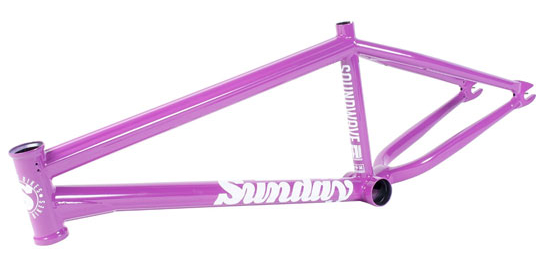
The frame is the backbone of any bike, including BMX bikes, and the material used in its construction significantly impacts the bike’s weight, strength, durability, ride quality, and price. When buying a BMX bike you need to consider the bike’s construction material.
Here are the most common materials used for BMX bike frames:
Steel
Steel is the traditional choice for BMX frames because it’s strong, durable, and has a certain amount of natural flex which many riders appreciate because it makes the ride less harsh. The most common type of steel used in better-quality BMX frames is chromoly steel, which is lighter and stronger than high-tensile steel used in lower-end bikes.
Aluminum
Aluminum frames are lighter than steel, which is why they’re often used for race BMX bikes where weight savings are important.
Aluminum is still quite strong, but it’s a stiffer material, so an aluminum frame will have a harsher ride than a steel one.
However, the lightness and stiffness of aluminum can be advantageous in racing where speed and efficiency are paramount.
Carbon Fiber
This is a relatively new material in the world of BMX, and it’s mainly used for high-end race BMX bikes.
Carbon fiber is both lighter and stiffer than aluminum, and it can also be shaped in ways that metal frames can’t, allowing for more aerodynamic designs.
The main drawbacks of carbon fiber are its high cost and the fact that it’s less durable than metal in the event of a crash.
Titanium
Titanium combines the lightness and strength of other materials but adds in superior corrosion resistance and a bit of natural flex for a smoother ride. However, titanium is expensive and less common, typically reserved for custom or high-end BMX bikes.
Each material has its pros and cons, and the right one for you depends on your budget, your style of riding, and your personal preferences. For example, a rider who does a lot of jumping and trick riding might prefer the strength and flex of a steel or chromoly frame, while a competitive racer might opt for the lightness of an aluminum or carbon fiber frame.
Size of BMX
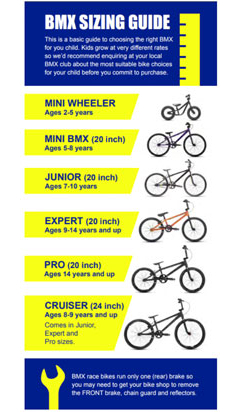 BMX bikes come in different sizes. It’s essential when you are buying a BMX bike that you get the correct size.
BMX bikes come in different sizes. It’s essential when you are buying a BMX bike that you get the correct size.
The right size for you depends on your height, age, and style of riding.
The size of your BMX bike can greatly influence your comfort and performance while riding.
It’s important to note that unlike other types of bicycles, BMX bike sizes aren’t based on the size of the frame but instead on the length of the top tube.
However, the size and style of the wheels can also vary between BMX types.
Here are the typical sizes for the different types of BMX bikes:
Race BMX Bikes
The top tube length usually ranges from 18″ to 24″, with the longer top tubes being more suited for adult or taller riders. The wheel size is generally 20″.
Freestyle BMX Bikes
The top tube length for these bikes is typically around 20″, but it can range between 19″ and 21″. The standard wheel size for these bikes is also 20″.
Dirt Jump BMX Bikes
Like freestyle bikes, these typically have a top tube length around 20″ and a wheel size of 20″.
Street, Park, Flatland, and Vert BMX Bikes
These sub-types of freestyle BMX bikes usually have a top tube length around 20″-21″ and a 20″ wheel size.
Cruiser BMX Bikes
These bikes have a longer top tube, typically around 21″-24″, and larger 24″ wheels. Some even use 26″ or 29″ wheels.
Junior BMX Bikes
These bikes are designed for younger riders, with top tube lengths typically ranging from 16″ to 18″, and smaller wheel sizes, often 18″.
**Remember, these are general sizes. Individual preferences, the rider’s height, and style of riding will dictate the best bike size. Always try out a bike before purchasing, if possible, to ensure it’s a good fit.
BMX Wheels
 For most BMX bikes, a 20-inch wheel is standard.
For most BMX bikes, a 20-inch wheel is standard.
However, for BMX racing, some riders prefer a larger 24-inch wheel (cruiser class).
Enduro BMX typically sport larger wheels (26″ to 29″).
Cross Country or XC BMX bikes feature larger, 26″ to 29″ wheels.
The tire tread can also vary: smooth for street and park riding, knobby for dirt jumping, and minimal for racing.
The wheels of a BMX bike are critical components that greatly affect the bike’s performance and the type of riding it’s best suited for.
The standard wheel size for BMX bikes is 20 inches, which is smaller than most other types of bikes.
This smaller size makes the bike more maneuverable and allows for quicker acceleration, which is ideal for tricks, jumps, and short, fast races.
BMX bike wheels consist of a few key parts: the rim, the hub, and the spokes.
The rim is the outer part of the wheel where the tire mounts. BMX rims are typically made of aluminum or alloy for a balance of strength and lightweight.
The hub is the center part of the wheel that the spokes connect to.
Some hubs are ‘freewheel’, meaning they allow the bike to coast without the pedals turning.
Others are ‘freehub’, which have a ratcheting mechanism that enables the same thing.
Freestyle BMX bikes often use a type of hub called a ‘cassette hub’ for better control during tricks.
Spokes connect the hub and the rim. The tension of the spokes can be adjusted to affect the wheel’s strength, weight, and performance.
BMX bikes usually have more spokes than other types of bikes for increased strength and durability.
Tires are also a significant aspect of BMX wheels.
Race BMX bikes usually have narrower tires with small, tight knobs for faster riding on smooth, packed dirt tracks.
Freestyle and street BMX bikes often have wider, smoother tires for better grip and cushioning on hard surfaces.
The choice of wheels and tires should be based on your intended style of riding.
Different manufacturers offer wheels and tires designed for the various types of BMX riding, from racing to freestyle to street.
Always ensure your wheel components are of good quality, as they greatly impact the bike’s overall performance.
BMX Brakes
 Most BMX bikes use a standard U-brake located on the rear of the bike.
Most BMX bikes use a standard U-brake located on the rear of the bike.
However, racing BMX bikes often feature more powerful V-brakes or disc brakes for better control at high speeds.
BMX bikes are equipped with different types of brakes depending on the style of riding they are designed for.
Here are the most common types:
U-Brakes
These are the most common type of brake you’ll find on BMX bikes, especially those designed for freestyle riding.
U-brakes are mounted on the bike’s rear and operate by pulling a set of “arms” together which in turn pulls the brake pads onto the rim of the bike, slowing it down.
U-brakes offer good control and are relatively easy to maintain and adjust.
V-Brakes
Also known as linear or direct-pull brakes, V-brakes are often found on race BMX bikes.
They are similar in function to U-brakes, but the design is a bit different and some riders find they offer slightly better stopping power and control.
Disc Brakes
These are less common on BMX bikes, but you may find them on some higher-end race BMX bikes.
Disc brakes offer excellent stopping power and are less affected by wet and muddy conditions, which can be an advantage in racing.
Brakeless
Some BMX riders, particularly street and some freestyle riders, choose to ride brakeless.
This is generally not recommended for beginners, as it requires a lot of skill and control to be able to stop the bike safely without a mechanical brake system.
Riding brakeless is not legal in all areas, so it’s important to check local laws if considering this option.
Gyro Brakes
For BMX bikes used in freestyle, particularly for tricks like bar spins or tail whips where the handlebars need to turn 360 degrees without tangling the brake cable, a device called a detangler or a “gyro” is used.
This allows the brake cable to rotate freely without getting twisted around the stem.
The type of brake that will be best for you will depend on your style of riding and your personal preference. Always ensure your brakes are properly maintained and functioning correctly, as they are a vital safety feature on your bike.
Gearing
 Single-speed gearing is typical in BMX bikes. However, the size of the sprockets can vary, especially in Race BMX bikes, to optimize for higher speeds.
Single-speed gearing is typical in BMX bikes. However, the size of the sprockets can vary, especially in Race BMX bikes, to optimize for higher speeds.
BMX gearing refers to the combination of the front chainring, rear cog, and chain that determines how hard or easy it is to pedal and how fast the bike can go.
This combination is often expressed as a gear ratio.
In BMX racing, riders typically use a larger chainring and smaller rear cog to attain a high gear ratio.
This high gearing is essential for achieving high speeds on straightaways. However, it requires more effort to start pedaling from a standstill.
On the other hand, freestyle BMX bikes typically have a lower gear ratio.
The smaller chainring and larger rear cog make it easier to start from a standstill and provide better control for tricks and stunts, but the top speed is lower.
BMX gearing can be adjusted by changing the number of teeth on the front chainring or the rear cog, allowing riders to fine-tune their bike’s performance based on their needs and the specific conditions of their track or riding style.
It’s crucial to understand that a smaller change in the rear cog will have a more significant impact on the gearing than the same change in the front chainring.
Also, the length of the chain must be adjusted when changing the gearing to ensure it fits properly and maintains tension.
Too much slack could lead to a dropped or jammed chain, while too much tension could wear out the components faster and reduce pedaling efficiency.
Pedals

BMX bikes use platform pedals, also known as flat pedals, which provide a large, flat surface for the rider’s feet.
These pedals allow for quick foot placement and removal, which is crucial for tricks, jumps, and other BMX maneuvers.
There are generally two types of platform pedals used in BMX bikes:
- Plastic pedals: These are lighter and cheaper than metal pedals, making them a common choice for entry-level BMX bikes and some types of freestyle riding. They are also less likely to cause injury during tricks. However, they tend to be less durable and provide less grip than metal pedals.
- Metal pedals: Typically made of aluminum, metal pedals are more durable and provide better grip than plastic pedals, thanks to the small metal pins that stick up from the pedal surface. They are common on high-end BMX bikes and are often preferred for racing and some types of freestyle riding. However, they are heavier and can potentially cause more injury during falls or failed tricks.
The type of pedal that will be best for you depends on your style of riding and personal preference.
It’s also important to consider pedal maintenance – pedals need to spin freely on their axles, so they’ll need occasional lubrication and may need to be replaced if the bearings become worn out or damaged.
Finally, no matter what type of pedals you choose, using BMX-specific shoes with grippy soles can help improve your control and performance.
BMX Bike Weight
 Lighter bikes are generally better, but it’s essential to balance weight with strength and durability—especially for Freestyle BMX, where the bike needs to withstand high impacts.
Lighter bikes are generally better, but it’s essential to balance weight with strength and durability—especially for Freestyle BMX, where the bike needs to withstand high impacts.
The weight of a BMX bike can vary significantly based on its type, materials, and components.
Here’s a general idea of what you might expect:
Race BMX Bikes
Race BMX bikes are usually the lightest type, often weighing between 15 and 25 pounds.
Their frames are typically made from lightweight materials like aluminum or carbon fiber, and they have fewer components, all contributing to their reduced weight.
This lightness is crucial in racing where every fraction of a second counts.
Freestyle & Street BMX Bikes
Freestyle and Street BMX bikes are generally heavier, often weighing between 25 and 35 pounds.
This is because they are built with stronger, heavier materials like steel to withstand the impact of tricks and jumps.
Their additional components like pegs and gyro brakes also add to their weight.
Remember, when it comes to BMX bikes, weight is not the only factor to consider.
The bike’s geometry, durability, and how it suits your style of riding and skill level are equally, if not more, important.
A heavier bike might be more suitable for certain types of riding, even if it’s less easy to lift or maneuver.
As with any bike, it’s always a good idea to try before you buy to ensure you are comfortable with its weight and feel.
Price Considerations When Buying A BMX Bike
 Prices for BMX bikes can range significantly based on the type, materials, and components.
Prices for BMX bikes can range significantly based on the type, materials, and components.
While higher-end bikes offer better performance, beginner riders might not need such a specialized bike.
The price of a BMX bike can also vary widely based on several factors including the type of bike (race, freestyle, etc.), the materials used in the frame and other components, the quality of the components, the brand, and whether the bike is new or used.
- Entry-level BMX bikes, which are typically designed for younger riders or beginners, can often be found in the range of $100 to $300. These bikes are usually heavier and less durable, with more basic components.
- Mid-range BMX bikes, which offer a balance of quality and affordability, generally range from about $300 to $800. These bikes often feature lighter and stronger frames made from higher-quality materials like chromoly steel, along with better components.
- High-end BMX bikes, which are designed for serious riders and professionals, can cost anywhere from $800 to several thousand dollars. These bikes typically feature the lightest and strongest materials, such as carbon fiber or high-end aluminum, along with top-of-the-line components.
Keep in mind that these are rough estimates and prices can vary.
It’s also important to consider additional costs for maintenance, replacement parts, and accessories like helmets and pads.
Finally, it’s important to remember that the most expensive bike isn’t necessarily the best bike for every rider.
The right bike for you depends on your skill level, your riding style, and your specific needs.
Always try to test ride a bike before you buy it and don’t hesitate to ask for advice from more experienced riders or bike shop employees.
Respected BMX Bike Brands
If you are thinking of buying a BMX bike these brands have a reputation for high-quality construction, innovative design, and commitment to the sport of BMX, and are worthy of your consideration.
Redline Bicycles
Founded in 1974, Redline Bicycles has a rich history in BMX, initially producing BMX frames before moving on to complete bikes. They make bikes suitable for every BMX discipline and are particularly renowned for their racing bikes.
Mongoose
Founded in 1974, Mongoose has been producing high-quality BMX bikes for over 40 years. They offer a wide range of models for different riding styles and have maintained their position as one of the dominant names in the BMX industry.
GT Bicycles
GT Bicycles has been a significant player in the BMX world since the 1980s. They manufacture bikes for all disciplines of BMX and have a solid reputation for quality and design.
WeThePeople
WeThePeople has been a part of the BMX scene since 1996. They are known for their innovative design and high-quality materials. Their range is extensive, catering to beginners and pros alike.
Haro Bikes
Founded by Bob Haro, the “father of freestyle BMX”, Haro Bikes has a legendary status in the BMX community. They produce a wide range of bikes, from affordable entry-level models to high-end competition bikes.
Sunday Bikes
Sunday Bikes are a relatively new name in the BMX world, but they have quickly gained a reputation for high-quality bikes and innovative designs. They offer a range of models that cater to all types of BMX riding.
Subrosa
Subrosa is another newer name in BMX, but they have quickly established themselves as a top manufacturer. They offer a wide range of BMX bikes, from beginner to pro-level, with a focus on street and park riding.
Fitbikeco
Established in 2000, Fitbikeco has a reputation for creating some of the best pro-level bikes in the industry. They focus on performance, and their bikes often feature cutting-edge BMX technology and design.
Kink BMX
Kink BMX, based out of Rochester, NY, is known for their innovative designs and commitment to the BMX community. They offer a range of bikes suitable for all BMX styles.
Cult
Founded by former BMX pro rider Robbie Morales, Cult focuses on creating bikes that reflect the progressive style of modern BMX. They offer both complete bikes and custom parts.
Flybikes
Flybikes is a Spanish brand that has been creating BMX bikes since 1999. They’re known for their innovative, stylish, and high-quality designs.
SE Bikes
Founded back in 1977, SE Bikes is one of the oldest BMX manufacturers. They are known for their retro designs and high-quality construction. They offer a range of bikes for different BMX disciplines.
Colony
Based in Australia, Colony is a rider-owned company that emphasizes quality and performance in their BMX bikes. Their bikes are designed to withstand the rigors of pro-level BMX riding.
Stolen Bike Co.
Stolen Bike Co. offers a diverse range of BMX bikes with a particular focus on street BMX. They provide value-oriented bikes that do not compromise on quality or performance.
